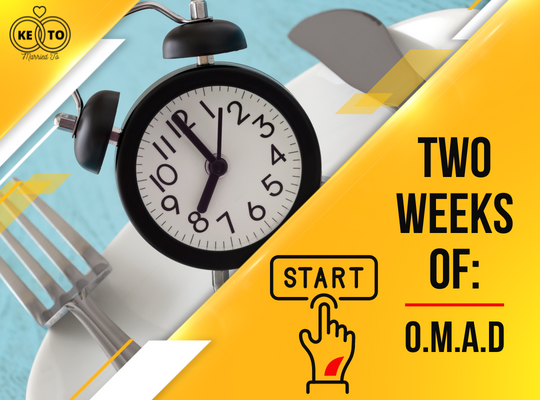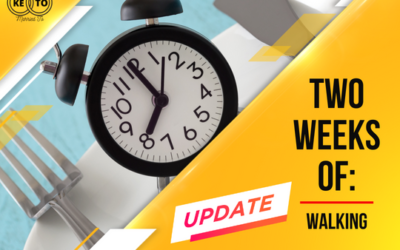So last week I talked about how I’ve fallen off the wagon a little bit and needed to reset the clock. I’m still in ketosis and feeling well, but I’ve put on a few extra pounds and know I can do better for myself. I can’t think of a better time to try the OMAD diet.
OMAD or One Meal A Day is an eating plan where you consume all your day’s calories in one single meal. In other words, you fast for 23 hours and then eat everything within a one-hour window. There are obvious challenges to this, but I’ve wanted to try it for a while as we get a lot of questions about OMAD and the benefits that come from this extended fasting.
INTERMITTENT FASTING VS THE OMAD DIET
I’ve done 16:8 intermittent fasting with 16-hours of fasting and 8-hours of eating. I didn’t mind it, but never saw enough benefits to continue the practice. However, what I did like about it was the decreased eating window led to me skipping breakfast. The less times I ate the less meals I had to prepare. I liked that a lot. One meal on OMAD sounds great.
There is also the benefit of your body working less on digestion and insulin levels remaining very consistent. I need to keep my insulin low with my condition so eating OMAD and only having to worry about my insulin spiking because of what I ate once a day is also a bonus.
IS OMAD DIET EXTREME
I will admit OMAD takes fasting to the extreme and I have some worries about hunger and getting enough nutrients. Research on those that have been successful on One Meal a Day show they eat very nutrient dense foods. Dark leafy greens, avocado, eggs, meats, and nuts are a staple. That isn’t really a stretch for me as our current keto meal plan has those foods in our everyday lives.
I don’t plan on doing much differently food wise. Normally we made a dinner with four portions and take the leftovers the next day. In this case I will just eat both portions. I will round that out with a sweet treat and some sides that top me up. My goal would be to take in around 1800 calories a meal.

That number is high when you think of it in terms of one meal. At the moment I normally consume about 500 calories a meal. Then with snacks throughout the day I get to that 1800 to 2000 range. I spread that out over 10 or more hours. With OMAD I’m going to be taking in all those calories in one go. That is concerning.
OMAD RESEARCH
As with anything alternate diet related the research on OMAD is hit and miss. There is a lot of antidotal evidence from OMAD users talking about weight loss, clearer skin, reduced bloating, and better health overall, but actual clinical research is weak at best.
There was one study completed by Canadian Family Physicians that focused primarily on the weight loss associated with OMAD. It concluded that people on OMAD lost about 40% more weight then those on a traditional diet. The study isn’t peer reviewed from what I can find and it only took place over six months so we have no idea on the sustainability of OMAD or its long term effects.
The OMAD Caveat
As with any of these two-week challenges I do please know that if I don’t feel right or just simply hate this way of eating, I will stop. I’m not here to punish myself for the sake of saying I did something. Wendy and I aren’t doctors so we do these challenges so we can answer your questions from a firsthand experience-based place. If I get through two weeks of OMAD I feel I will be able to address some of our readers questions about this way of eating, but if it goes sideways, I will go back to my traditional keto diet that has worked so well.
Next week I will be back with an update on how things are going. If I happen to get too hungry and black coffee isn’t doing the trick you may see me throw in the white towel on social media. Like I said this is about health, not punishment.
Wish me luck friends. See you on the other side of OMAD.
Bill



